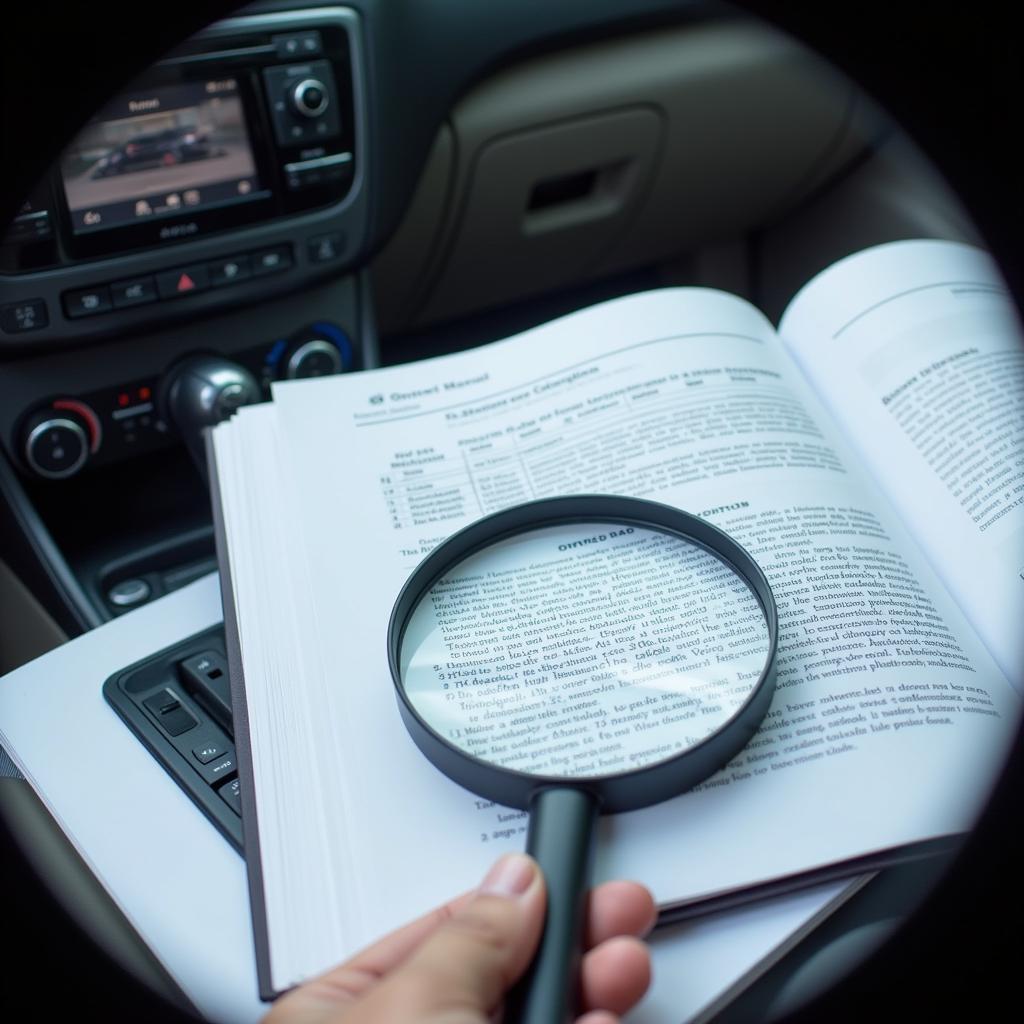Knowing your car’s exact color code is essential for various reasons, from ordering touch-up paint to match minor scratches to repainting the entire vehicle. But where exactly do you find this elusive code? Don’t worry; it’s easier than you might think. Let’s explore the different ways to track down your car’s color code and make sure you get the perfect match every time.
Decoding the Secrets: Where to Find Your Car’s Color Code
Your car’s color code isn’t just a random string of characters; it’s the key to replicating its exact shade. This code is crucial for accurate color matching, ensuring a seamless blend when repairing paint chips or repainting sections.
1. Check the Driver’s Side Door Jamb
The most common hiding spot for the car color code is the driver’s side door jamb. Open the door and look for a sticker or metal plate. You’ll usually find the color code alongside the vehicle identification number (VIN) and other manufacturing information. The code is typically represented by a combination of letters and numbers.
2. Consult Your Owner’s Manual
Your car’s owner’s manual is like a treasure map to your vehicle’s secrets, and the color code is no exception. Check the index or the sections related to paint and exterior for information on finding the color code.
“Many car manufacturers realize the importance of easy access to the color code,” says automotive expert John Smith, “That’s why the owner’s manual often provides clear instructions on where to locate it.”
 Car Owner's Manual
Car Owner's Manual
3. Contact Your Dealership
If the hunt for the color code is proving fruitless, don’t fret! Your local dealership can often provide you with the information based on your VIN. They have access to detailed vehicle records and can quickly retrieve the color code for you.
4. Utilize Online Automotive Databases
Several online databases specialize in automotive information, including color codes. Websites like Autozone, PaintScratch, or CarPart often allow you to enter your VIN or vehicle details to retrieve the correct code.
5. Decipher the Color Code Format
Car color codes follow specific formats that vary by manufacturer. For example, a Ford color code might look like “PM”, while a Toyota code might be “1G3.” Understanding the format can help you ensure you’ve found the correct code.
What if I Can’t Find My Car’s Color Code?
If all else fails and you’re still struggling to find your car’s color code, don’t despair! A professional auto body shop can use a specialized tool to analyze your car’s paint and identify the exact color match.
“Sometimes, environmental factors or fading can make it tricky to match the color code perfectly,” explains Sarah Jones, a seasoned auto body technician, “That’s when a professional eye and specialized equipment can ensure a seamless blend.”
Finding the Right Shade: Tips for a Perfect Match
- Clean the Area: Before you start comparing paint samples or providing the code to a shop, thoroughly clean the area where you need a touch-up. Dirt and grime can affect the color perception.
- Consider Fading: Keep in mind that paint fades over time, especially with sun exposure. A professional auto body shop can help you factor in fading and ensure a perfect match.
- Double-Check the Code: Before ordering paint or scheduling a repair, double-check that you have the correct color code to avoid any costly mistakes.
Finding your car’s color code doesn’t have to be a mystery. By following these tips and exploring the different avenues available, you can easily unlock the secret to a perfect color match and keep your car looking its best.
Need help with color matching or other color-related inquiries? Contact us at:
Phone Number: 0373298888
Email: [email protected]
Address: 86 Cầu Giấy, Hà Nội.
Our dedicated team of color experts is available 24/7 to assist you with any questions or concerns.